When people talk about materials for coating bathroom surfaces, they often think about different types of tiles. Sometimes it comes to wallpapers, natural stone and the like. But no less attractive and, moreover, a practical way of decoration will be the use of linoleum in the bathroom.
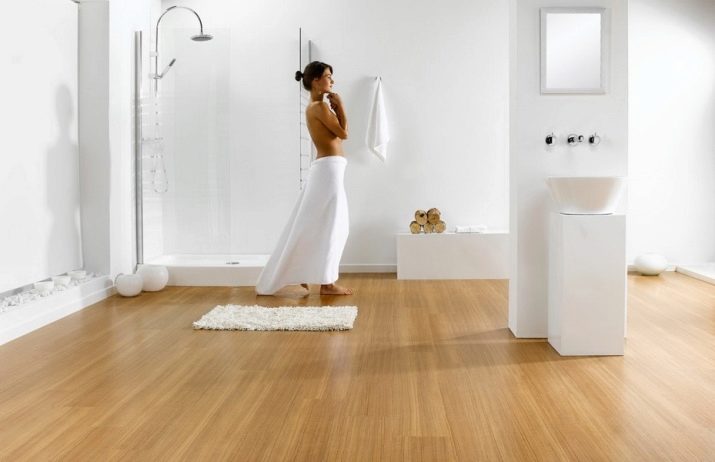
Features, advantages and disadvantages
Yes, this material is rarely found in bathrooms. And the very expediency of its use there causes fierce debate. Professionals know that not any type of linoleum is suitable for a humid environment, and that the installation technology is not the same as in other rooms. However, there are no insurmountable obstacles to the use of such a coating. There are no special brands or varieties of linoleum, which would be designed specifically for the bathroom.
Of the currently commercially available coating types, only PVC-based options are suitable for this room. Some experts also say that you can use marmoleum. But one should not fully trust such statements. Yes, marmoleum is of high quality, but its main layer can absorb water and steam. In addition, this material is more fragile than PVC-based products.
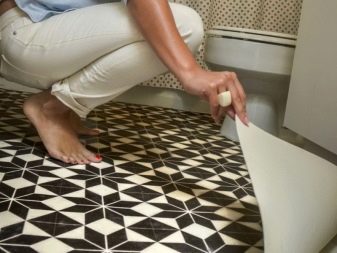
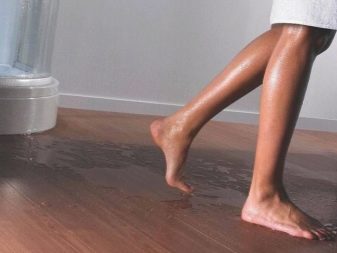
To decide whether to use linoleum in the bathroom, it is necessary to clearly present its positive and negative qualities. By using such a material, the absolute impermeability of the floor to water can be guaranteed. Of course, if the coating is chosen correctly and laid exactly according to technology. Linoleum decoration is also attractive because of its cheapness. Only paint is more accessible, and then not of any brand.
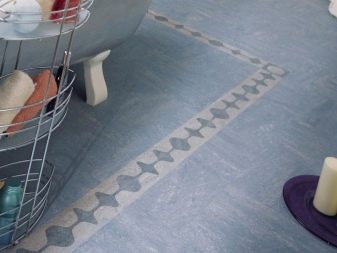



Immediately after laying out the linoleum rolls and securing them, you can begin to use the bathroom.No need to wait for something to dry, grab or stick. In addition, linoleum can be decorated with a wide variety of materials. There are options for wall rolls with imitation:
- tiles;
- wood;
- stone;
- laminate flooring.
The second option is especially attractive, because it is not very rational to use natural wood to finish the bathroom. Laying linoleum with your own hands is not difficult compared to installing ceramic tiles. Only some stages require certain skills.
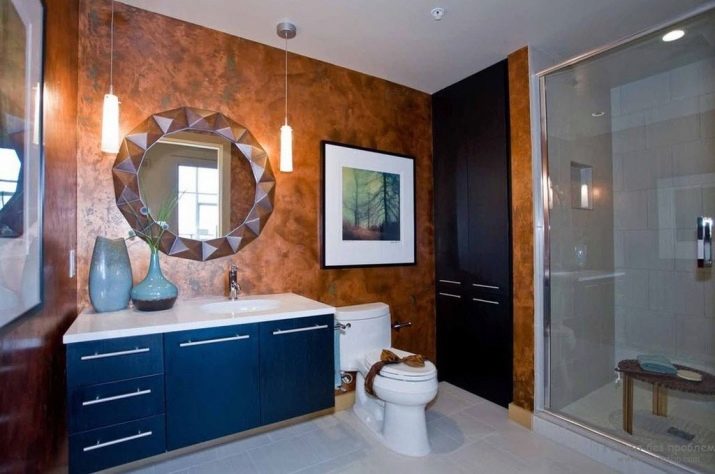
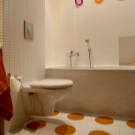
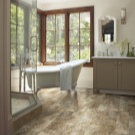
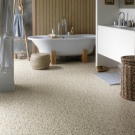

Important: good linoleum damps extraneous sounds better than tiles. Walking on it with bare feet is warmer, and therefore more pleasant.
Touching the surface of linoleum with another part of the body also does not cause discomfort. Only wood is warmer, but its shortcomings have already been discussed. In addition, modern roll coatings do not impose any special care requirements. After ordinary wiping with a damp cloth, the surface regains its characteristic luster. However, this does not mean that you can ignore the problems that arise when choosing linoleum.

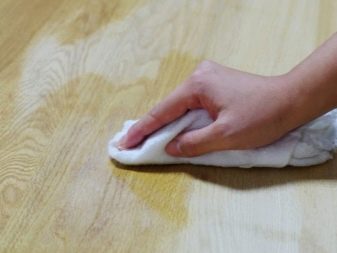
If water (liquid or vaporous - it doesn’t matter) gets under a layer of material, it won’t be able to go back. Therefore, there is a very high risk of mold. If the surface of linoleum is moistened, it will slip, which means a high risk of injury. In addition, inexpensive grades of material, even labeled as moisture resistant, serve much less than tiles. The way out is the use of solid commercial linoleum and the rejection of false savings on its quality.
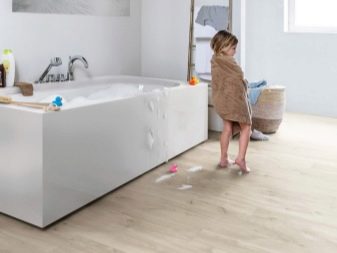

How to choose?
But even PVC linoleum for the bathroom needs to be selected correctly. Errors in evaluating the properties of the material can adversely affect its further operation. First of all, you need to get acquainted with the structure of the coating. Only completely uniform solutions without any substrate will do. If it is, it will serve as a kind of sponge, absorbing water.
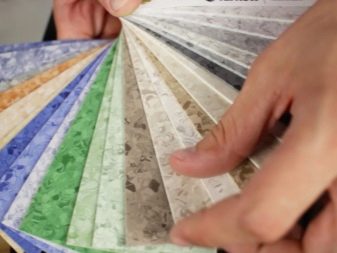
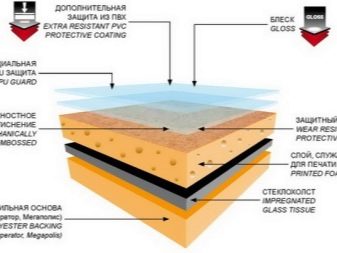
An equally important indicator is wear resistance. Both in an apartment and in a private house, linoleum flooring in the bathroom for permanent use should belong to the commercial class. Allowed - but not encouraged - the use of semi-commercial coverage. The top layer of high density polyurethane is required. However, even floor coverings that meet these requirements may not be suitable.
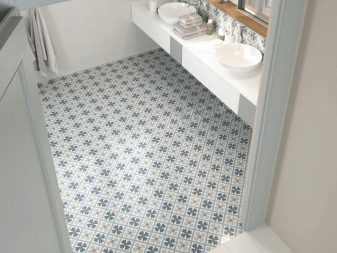
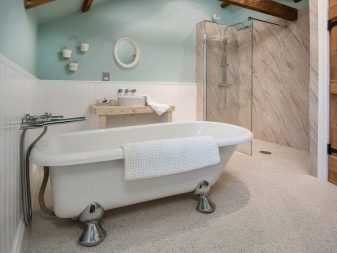
The fact is that in the bathroom you can only lay non-slip linoleum. To prevent slipping, crushed corundum is placed in the surface layer. The quality of slip protection is classified according to the international standard DIN 51130; assign one of the categories from R8 to R13. In the bathroom, only linoleum of at least R10 can be laid on the floor.
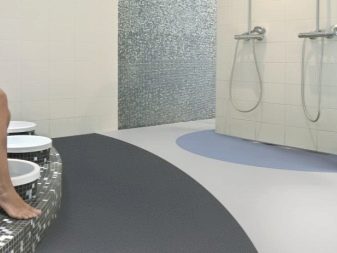

Important: high-quality non-slip material, unlike slippery or fake, is very expensive.
It is also worth considering that wetting the surface lowers anti-slip qualities. Therefore, you need to make a choice between using an elite non-slip coating and laying out simple linoleum, which is covered with rubber mats in the most critical places. The choice of color and texture is not very important from a practical point of view. However, these points are very important from the point of view of the design concept and personal taste. Given the features of the bathroom, it is better to choose linoleum with antibacterial components.
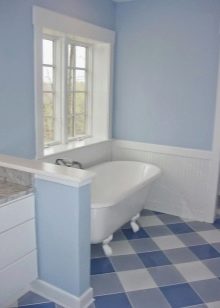
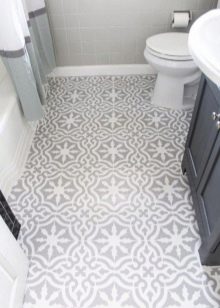

Installation and other details
When laying linoleum on walls or on the floor in the bathroom, you will have to pay maximum attention to sealing the coating. Thoroughly cover the perimeter of linoleum carpets and all joints. A very important role is played by the characteristic of the screed. Fix linoleum is allowed only to completely dry screeds. At the same time, their surface should be perfectly aligned. Linoleum scrupulously repeats the shape of the base on which it is laid out.
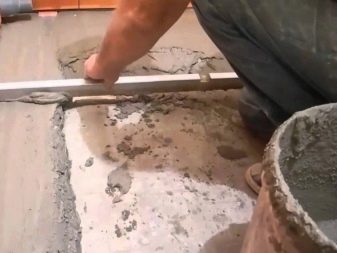
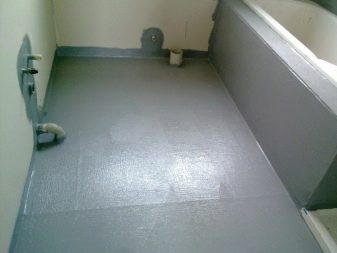
Therefore, the slightest irregularities, deviations from ideal geometry will certainly affect the properties of the coating.This is not only an aesthetic defect. After some time, the destruction of the material will inevitably begin. Experts advise to lay as many whole pieces as possible, ideally by dismantling the plumbing temporarily. The decomposed material must be kept unfolded for at least 24 hours, so that it perfectly adapts to the shape of the underlying surface.
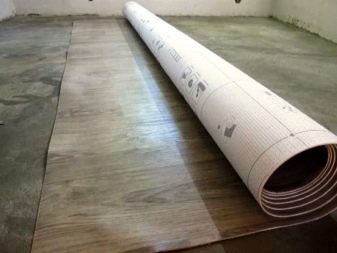
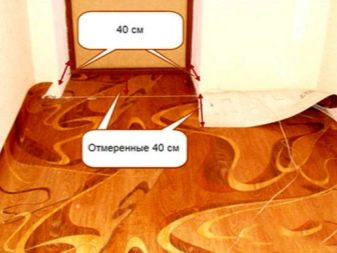
In places where you can’t do without joints, you need to carefully cut and customize linoleum. First, prepared strips are laid on top of each other with a margin. Res must be done on the overlap. This must be done with the expectation of an absolutely exact coincidence of the edges. To seal the joints, cold or hot glue welding is used.
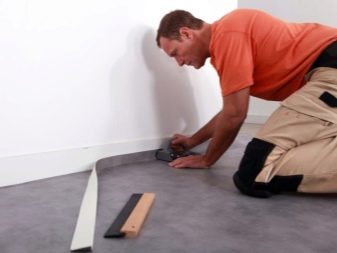
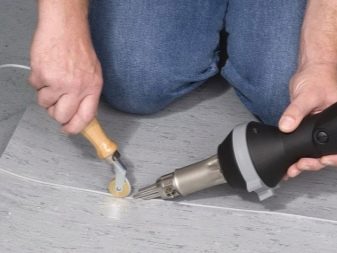
It is better if the edges are bent to the wall. At the same time, something like a “trough” is formed. Later, even if the water spills, a large amount of water will be retained in the “trough”. The glue used must be resistant to moisture.

Glue linoleum in two stages. Initially, one part of the roll is rolled out to the middle of the bathroom. The screed with a spatula is coated with an even adhesive layer. Then roll the roll, trying to simultaneously press it. This will remove both air bubbles and the excess part of the glue, which otherwise would have collected in the middle.


Important: the instruction for some types of glue prescribes to lubricate not only the screed, but also linoleum.
The most critical area is the joint between the floor and the wall. A smooth transition is provided with a triangular plastic baseboard. When the material is laid out, the upper edge is pasted over with a soft border. This step allows you to achieve excellent tightness. But there is a different technique.
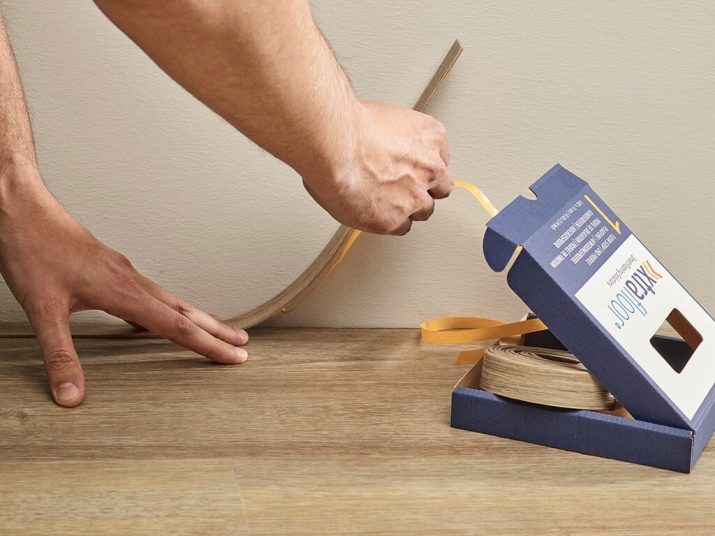
It involves working with the so-called flute skirtings. Each skirting board consists of 2-3 parts. One piece is placed on the corner and helps to smoothly bend linoleum. The other (the baseboard itself) covers and seals the wall edges. In practice, it is proved: flute skirtings not only simplify the work, but also guarantee excellent tightness of the coating.
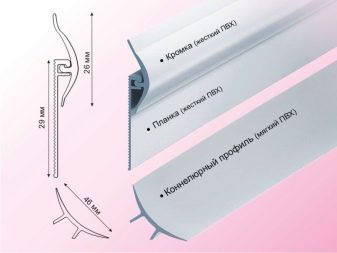

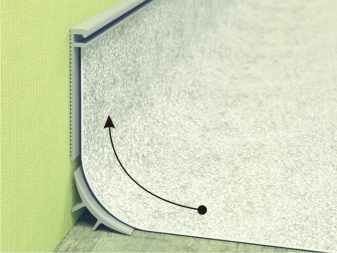
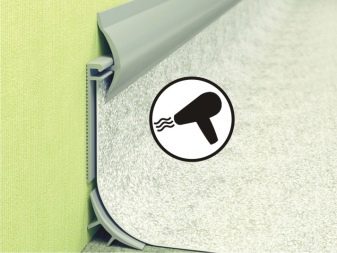
Preparing a wooden base for laying linoleum is even easier than stone. Both materials can change their sizes and shapes, therefore they are ideally combined with each other. Of course, the wood should be absolutely even. Best of all - wooden boards (plywood or chipboard).
Important: all such materials are treated with antiseptics; the base is glued and the joints are sealed in the same way as when working on stone.
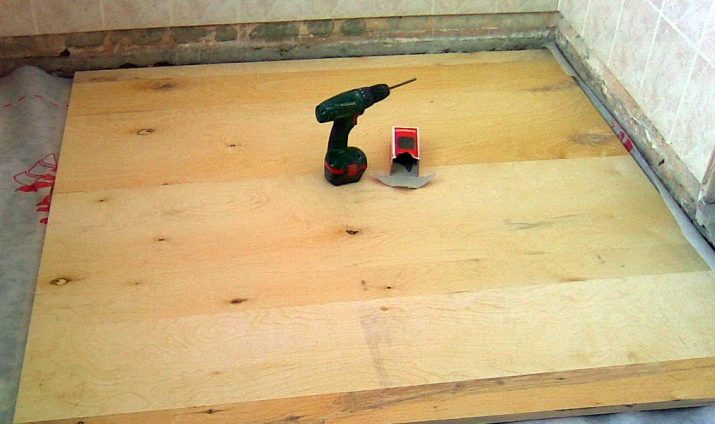
On how to properly stack linoleum, see the next video.










